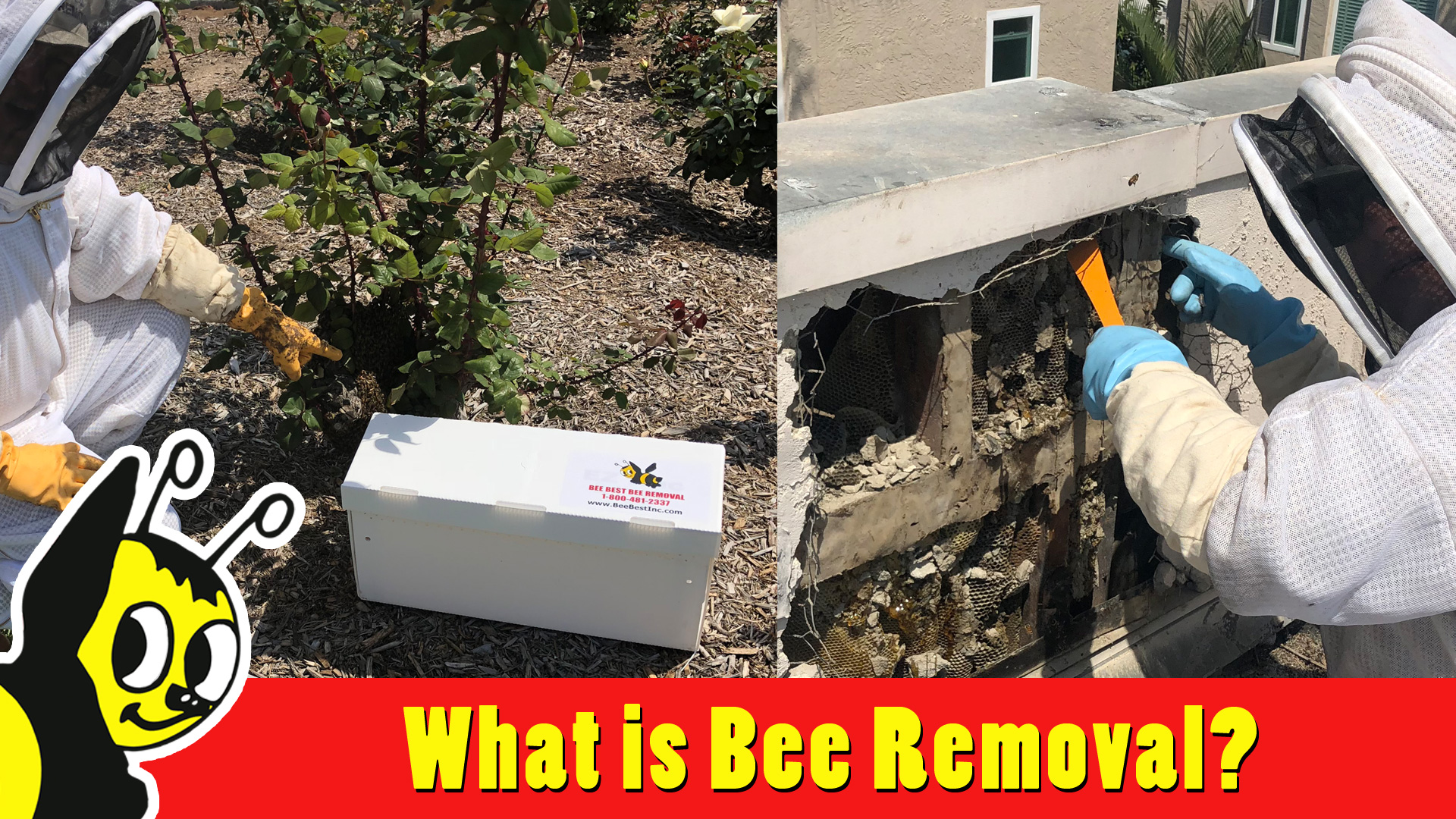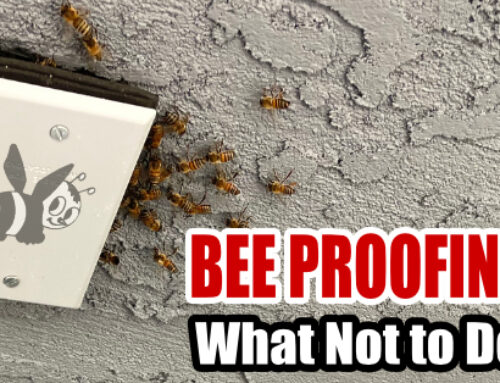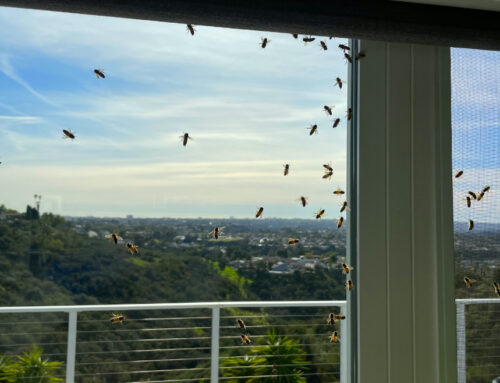What is the definition of Bee Removal? Bee Removal is a term that is used to describe the action of removing and/or resolving a bee problem.
Let us elaborate.
When people get unwanted bees on their property, they often look for a beekeeper, pest control, or bee removal company, to remove the swarm or hive. So what exactly is “bee removal”. There are actually several types and ways of performing a bee removal.
Bee removal can be broken down into two main categories. The first type of Bee Removal is what is known as “live” bee removal, but be warned, there are actually different types of live bee removal. Let’s break these down first:
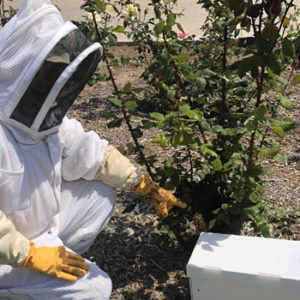
Live Removal with Nuc Box
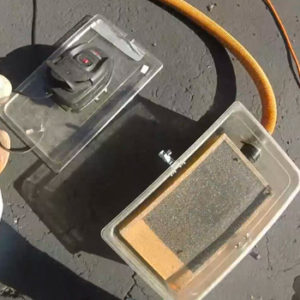
Modified Bee Vac For Live Removal
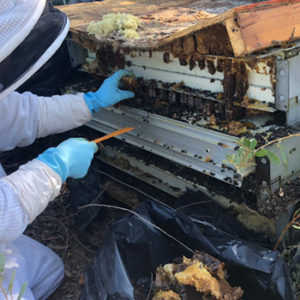
Impossible To Extract Hive
- Live Bee Removal (without pesticides): This type of bee removal can be misleading. Technically the bees are removed alive, but that doesn’t always mean they will survive. Unfortunately there are some people in the industry that mislead people by claiming they perform live removal, but they don’t actually save the bees. These companies often use shop vacs (or vacuums that are not modified to be gentle). The problem with regular vacuums is that the bees become injured when they are sucked up into the chamber of the vacuum. Only a fraction of the bees survive, which inevitably causes the entire colony to die off. Technically these companies are not lying. It is technically a live removal…but it sure isn’t humane.
- Live Bee Removal (catch and release): The next type of bee removal is one where the bees are removed alive in a humane way, but not necessarily looked after or cared for afterward. Companies that perform this type of bee removal often don’t have a place to put the bees. Perhaps it’s because they don’t have the land or space to set up bee hive boxes. These companies do take the time to remove the bees humanely, but then dump them illegally, often on someone else’s property.
- Live Bee Removal (with relocation): This type of bee removal is when a company or bee professional not only removes the bees humanely, but also relocates them to a bee hive box. In other words, the bees are not dumped randomly or illegally, but placed in a reserved spot, hopefully in a proper bee hive box. The problem with this type of bee removal is that it doesn’t ensure that the bees will have enough food and water. They are often not re queened to control aggression. In other words, they are simply left on their own, to prosper or thrive on their own. No care is given to help ensure the colonies continued survival. This type of bee removal is better than the previous two, but the next type is the one all people should seek out when looking for a humane bee removal company.
- Live and Humane Bee Removal (with relocation and care taking): This last type of live bee removal is all about sustainability. It is the truest form of a live and humane bee removal. In this type of bee removal, the bees are removed alive and humanely. Then they are taken to an apiary, farm, or beekeeper, where they will be cared for. In this scenario, the bees are tended to (usually at least bi-weekly). The beekeeper will perform regular hive inspections to ensure the health of the colony. Water and food are often provided if not available by nature. This is what most people think of when they think about Live Bee Removal, but sadly it is not very common in the bee removal industry.
The second category of bee removal is through elimination and is very different than live removal. In these types of bee removals, the bees are unfortunately eradicated. This type of bee removal is sadly sometimes the only way to get certain bee problems removed off of a property. This method of bee removal often involves the use of pesticides to ensure human safety. Below are the following types of removals where the bees are eradicated.
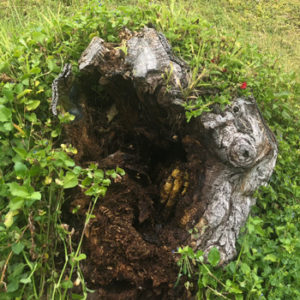
Bees and Honey Inside Tree Stump
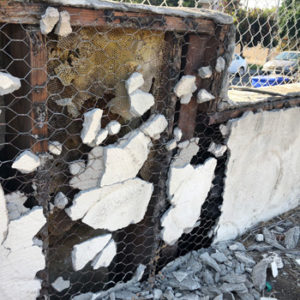
Bees Inside Stucco Wall

Impossible To Extract Hive
- When bees are in an area that is impossible to gain access to the hive. If the bees are in or under concrete, granite boulders, in a sign pole, buried deep in the root system or knot hole of a large tree, it is often impossible to get the bees out alive. In these situations, the only thing that can be done to resolve the problem is to perform a bee elimination.
- When bees are africanized. In many of the southern states in this country, Africanized bees are a big problem. These bees are aggressive and sometimes deadly to people or animals passing by. Every year there are incidents here in San Diego where someone dies or has been attacked by Africanized bees.
- When the bees are in an area that is not safe to perform live. There are times where bee eliminations are necessary because it is too difficult to remove the bees alive safely. Sometimes the bees are under a dilapidated deck or crawlspace. In a cramped space, it is nearly impossible to have a bee technician crawl underneath a small space, in a full bee suit. Then to have the technician laying on his back, while trying to wrangle the bees into a box…its often just not feasible. The same goes for tight attics. If the technician can’t stand up in a full bee suit, removing the colony alive is often impossible.
So as you can see, the type of bee removal service you choose, often depends on what type of bee problem you are having. If the bees can be removed alive, choosing live bee removal (with relocation and care taking) is always the best and most humane option.

